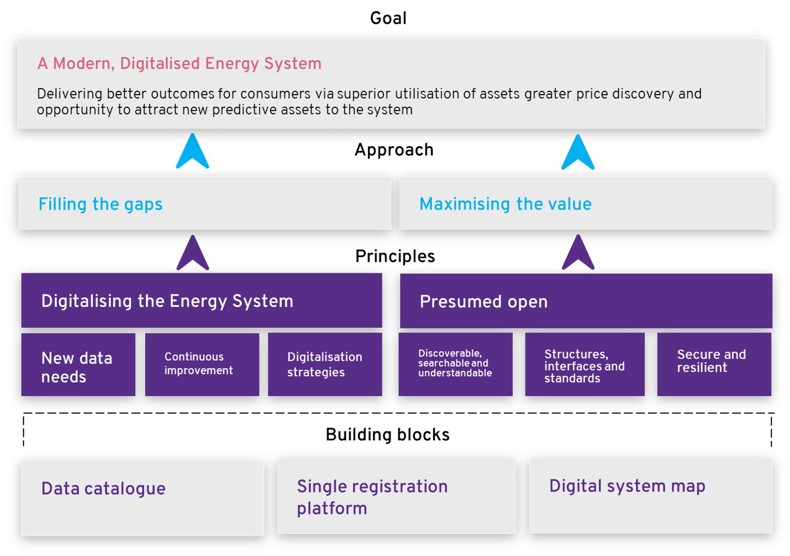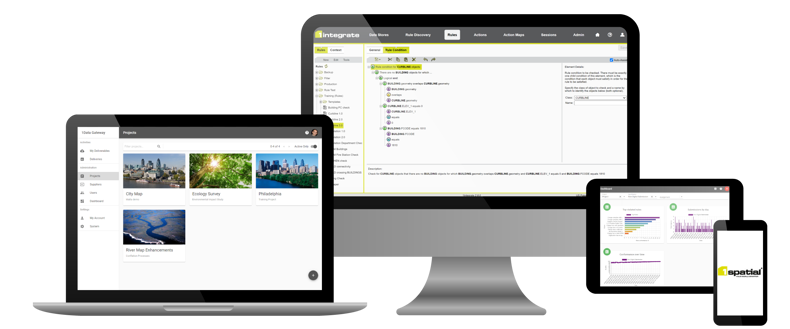A Digital Vision for Energy
A Digital Vision for Energy: It starts with data
Author: Karen Jones, Utilities Account Manager
The energy sector has been on a data journey for some time now, ever since the increase in societal expectations meant that the sector needed to undergo some vast changes. Maybe it’s fair to say that the true value of data wasn’t appreciated or considered as seriously at the time, but could we have predicted there would be as much focus on data as there is today?
The overall quality of data contained within an organisation is of heightened importance today. Increasingly we are seeing how pivotal data is when it comes to achieving your goals, whether it be having a single digital representation of your asset network or achieving net zero.
How do we get there?
If it was as simple as it sounds, we’d have achieved this many years ago. However, the challenge at hand is in fact large, involving a substantial number of stakeholders. The increasing focus from regulatory bodies and specialised taskforce’s aims to tackle the issue head on and define the overall roadmap. It starts with data.
The end goal has been defined in greater detail over the past few years, and in part is captured in the Energy Data Task Force’s (EDTF) report where the goal is to achieve a ‘A Modern, Digitalised Energy System’.
There are a number of building blocks, principles and approaches which are required to get there and there is a key direction of travel to transform the current ‘analogue’ system. In the report there is focus centred around two key approaches:
- Filling the Data Gaps
- Maximising the Value of Data
You need to be able to trust the data at your disposal. A key part of this is building trust within organisations and amongst stakeholders.

Image 1: Energy Data Task Force
The emergence of projects such as the London Underground Asset Register (LUAR) and the National Energy System Map (NESM) to name a few, are showing that there is an ever-growing need for data to be made available, and in doing so, it must be in an acceptable state in terms of accuracy, completeness and quality.
The NESM project on behalf of the ENA, and in collaboration with Ordnance Survey is targeted towards what is known as Recommendation 5: Visibility of Infrastructure and Assets. Which in practice translates to a map which will allow visibility of the Energy System’s infrastructure and assets. It can help to instruct the creation of new markets and assist with aiding strategic investment decisions.
Steps towards success
As has been acknowledged numerous times, one piece of the puzzle comprises of what is needed from purely the software and platform side of things; and having an established Minimum Viable Product to demonstrate what that could look like, and how it will work. Another crucial element is the cultural piece of sharing the data in the first place and realising the value that this has on the whole energy system. As the barriers to data sharing continue to be broken down, we can start to fully unlock the value of interoperability between datasets.
How our tools help to build trust in your data
Our rules engine 1Integrate provides an automated rules-based approach to data management. 1Integrate uses rules for validating and enhancing data.
- The validation process allows you to measure the quality of your data, and consequently identify where problems may exist.
- Enhancing your data involves fixing the uncovered issues, synchronising and integrating different sources of data, inferring missing data or transforming it.

These rules form the basis for your rules catalogue which is based around your data requirements and also facilitates the automation of your data management process. This isn’t a one-off exercise; you now have the basis for ongoing data quality management which streamlines auditing and allows you to improve your data.
Wherever you are in your data journey, we can help get your data in shape and keep it that way. Get in touch to book a 30 minute discovery call with a member of our utilities team.
A rules based approach to data quality
CPO Bob Chell explains more about using rules to validate data and continuously improve data quality.
Continue reading
